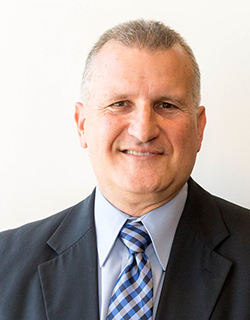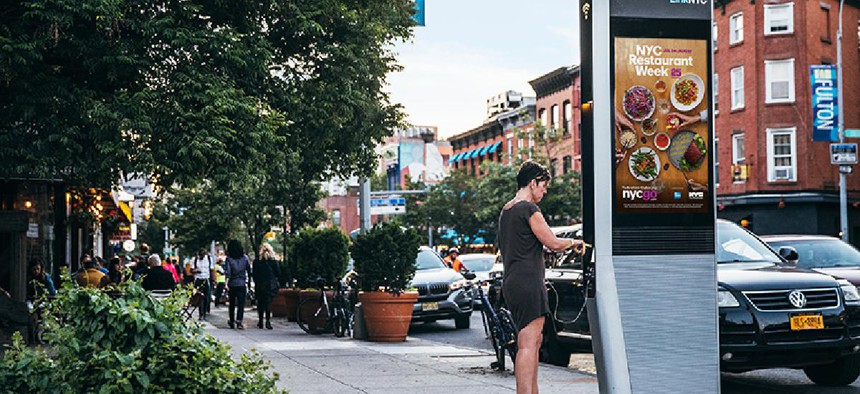Stanley Shor, the assistant commissioner for franchise administration at the New York City Department of Information Technology and Telecommunications, oversees contracts with many companies that provide telecommunications services for the city. Recently, he’s been managing the rollout of LinkNYC, the checkpoints that have replaced pay phones with free Wi-Fi and other services. In an interview with City & State, Shor discussed the implementation of LinkNYC and future projects by the Franchise Administration.
RELATED: An interview with DoITT Commissioner Anne Roest
C&S: What role does the Franchise Administration play within DoITT?
SS: The city charter defines a franchise as the use of the city’s streets to provide a public service. People are familiar with cable television coming into everyone’s home. That is a use of the city streets because they’re providing this service utilizing the conduits and the streets. So this department is responsible for those uses of the streets for public purpose that happens to also be a telecommunications purpose. Other categories include public pay telephones, which we are transforming into public communication structures, which equals (LinkNYC). We have mobile telecommunications, which is primarily the installations that are on light poles and traffic poles that facilitate cellular service in the city. Then just regular business internet services that go onto the streets. We have contracts. The most interesting contract is the contract with City Bridge for the build-out of the LinkNYC networks, which create the structures that we generically call public communications structures. We work closely with the general counsel’s office because there’s a lot of legal issues that we deal with. We do planning, we do contract administration, we do go to court.
 C&S: How was the concept for LinkNYC first conceived, and who were the major players in the rollout of this project?
C&S: How was the concept for LinkNYC first conceived, and who were the major players in the rollout of this project?
SS: Well, it was me. Basically, we had about a dozen pay phone franchises that were coming to the end of their contracts in 2014. The contracts had basically a term of 11 years with a four-year renewal. When we granted the renewal, we also eagerly started planning for what would happen at the end of the renewal, because we knew that we didn’t want to have pay phones anymore. We had quite a bit of interest from people looking for free Wi-Fi and then clearly our planning was in the right direction and the de Blasio administration came in. They were very eager to provide affordable broadband for everyone in the city, so this was already a block of effort that was going in that direction. So they helped us refine it and move forward with a request for proposals early in the first year of the term in 2014. We were able to attract a number of proposals and get one that was actually better than what we had asked for – a higher speed Wi-Fi. We didn’t actually specify how fast the Wi-Fi had to be, we just specified that we wanted it totally free. So we had the winning proposal – the City Bridges proposal that’s being implemented now.
C&S: What do you see as the future of LinkNYC?
SS: They have to build in all five boroughs every year. Then, as far as exactly where and what the issues are in different parts of the city, that’s something that we do. It’s a process. We try to identify the areas of the city that are highest priority so, for example, in the first year, Jamaica, Queens, was identified as one of the highest priorities and even though that was a difficult place for the franchisee to get to, they went out there at Jamaica. What I’m hoping to see is that the rollout continues and continues in each of the boroughs. That the different business areas of the city get Links as soon as they can. That people embrace the use of them, because there’s a lot of great features and we want maybe more features on the tablets so that people can get more use out of them all the time. There’s 2 million people who have subscribed to the service to be connected to the Links. There’s almost 1,000 (Link kiosks) that are activated now. (Editor’s note: More kiosks have been installed since this interview.) That’s going to at least double by this time next year.
C&S: Are there any other initiatives by the Franchise Administration that are currently in the works?
SS: Clearly, there’s a major effort in getting LinkNYC, in getting the franchise created and implementing it. As far as the other franchises are concerned, we’re looking at all the franchises and looking to see what we can do to improve the franchise agreements going forward. We’ve begun adding in specific provisions about resiliency so that the franchisees have requirements to do a better job than they did back in Hurricane Sandy, when certain telecom facilities weren’t properly built and they weren’t properly protected. Mobile telecom has become a very hot area. When we first started the franchise more than 10 years ago, we hardly got any interest from the companies. Everyone and their mother now has a cellphone and a smartphone and wants to do the stuff on the smartphone that’s not just talking anymore. That uses a lot of capacity, so that’s what the companies are looking for. So we’re looking at the broadband franchises to see what we can do. Especially as far as equity and getting service to all the parts of the city. It’s not that, at this point, we’re ready to announce anything, but (these are) the kinds of things that we are looking at. It doesn’t grab your eye like the Links, but it’s important for the people.
NEXT STORY: Tech can help cut through government red tape


